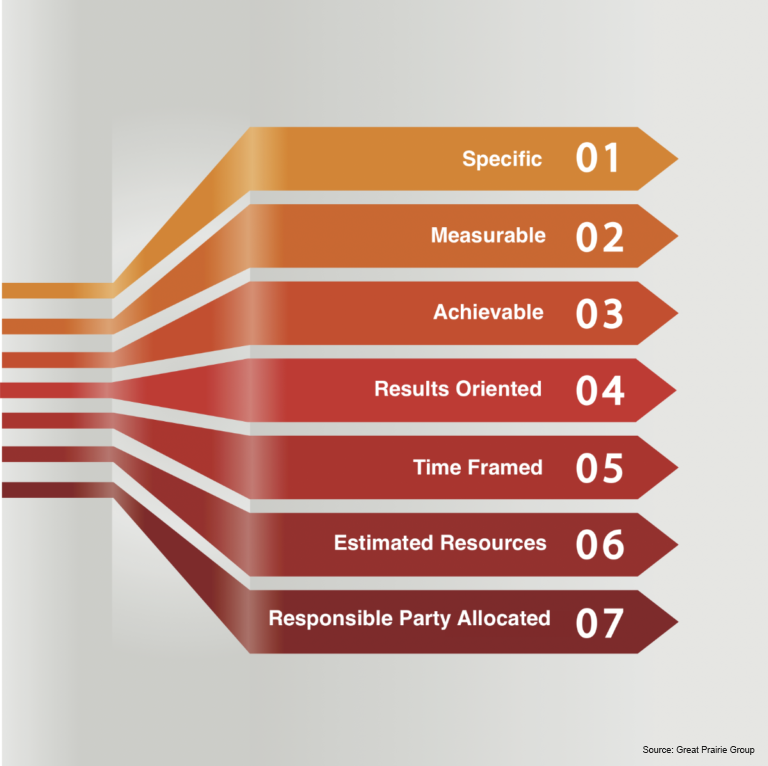The problem with strategic initiatives is that all too often they are not strategic. What they aim for is not always clear. They focus on superficial issues and never get to the root of the problem: the factors required to make the strategy work. What you end up with is a list of high-level ideas without a logical strategic plan that links strategy to initiatives to strategic impact. Inevitably, a poor strategic plan leads to poor strategy execution. But there is a different way. We outline three powerful steps that can make all the difference, and can improve the odds of successful strategic planning and delivery of strategy execution.
WHAT ARE YOUR STRATEGIC INITIATIVES?
What they should be: Strategic initiatives are the specific actions required to implement the strategy. They are finite-duration activities designed to help the organization achieve its target strategy. They are few yet critical actions focused on executing the strategy.
What they should not be: Strategic initiatives are not “business as usual.” Strategic initiatives are not just “new” organizational efforts being taken on. They fall outside the organization’s day-to-day operational activities.
HARNESSING THE POWER OF STRATEGIC INITIATIVES
Strategic initiatives start with input from the strategy for execution, the SWOT assessment, and the identification of the right critical success factors. The key questions that we are trying to answer are the following:
- What initiatives are required to fulfill the strategy?
- What are the costs and benefits of each initiative?
- What is the cumulative impact of these initiatives on the business?
- Will our strategic initiatives enable us to achieve the strategy?
To make strategic initiatives count follow three steps: (1) specify the effort required to achieve the target objectives, (2) complete a financial plan, and (3) assess the strategic impact and own the plan.
1. SPECIFY THE EFFORT
Each strategic initiative must be clearly specified according to the SMART’ER framework. SMART’ER stands for the following:

- Specific – Objectives should be specific and describe what they will achieve
- Measurable – Objective should be measurable. If not, it will be impossible to know when they are achieved. For those objectives that cannot be quantified, qualitative measures can be assigned
- Achievable – It is important to set achievable targets. If not, people will quickly recognize that targets are unattainable and give up their efforts. Targets can contain “stretch,” but they must be achievable nonetheless
- Results Oriented – Objectives must have a reason to exist and that reason must be clear.
- Time Framed – It is important to allocate a time frame to all objectives. The business strategy may have a critical path of activities that depend on one another. The absence of a time frame raises the risk of failing to execute
- Estimated Resources – It is essential to estimate the resources required for each initiative. Without an estimate, it is difficult to weigh the financial merit of the initiative and appropriate the right amount of resources.
- Responsible Party Allocated – Each initiative must be allocated and owned by a responsible individual for its achievement.
2. COMPLETE A FINANCIAL PLAN
Relevant financial information about the initiative must be collected. This information includes project budget, expected benefits, and risk. The Discounted Cash Flow method is an appropriate tool to use over the planning period – usually 3 to 5 years out.
3. DETERMINE THE STRATEGIC IMPACT AND OWNERSHIP
As a last step before submitting the business plan, check for the following:
- Is the content thorough and accurate?
- Is there a logical linkage between strategy, SWOT, critical success factors, initiatives, plans, and budgets?
- Have you determined insights that improve the likelihood of competing successfully?
- Is the implementation plan feasible given market circumstances, company capabilities, planning horizon and magnitude of the change proposed?
- Have you coordinated efforts with the necessary internal functions and other organizational units?
- Has ownership of the plan been assigned?
- Is the owner passionate about the business direction and the plan?
Once this information is completed, the executive leadership can begin the review.
CONCLUSION
As part of the strategy execution, the strategic planning process gives organizations an opportunity to evaluate the true critical success factors to make the strategy work and design effective strategic initiatives accordingly. Successful companies take advantage of such an opportunity to harness the power of strategic initiatives. The laser-like focus of SMART’ER initiatives that are financially sound gives the organization a tremendous boost. Following the three simple steps described in this article will increase the likelihood of successful strategy execution.

